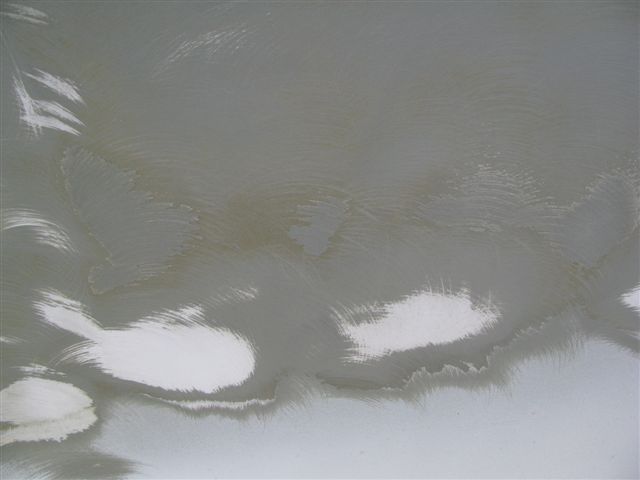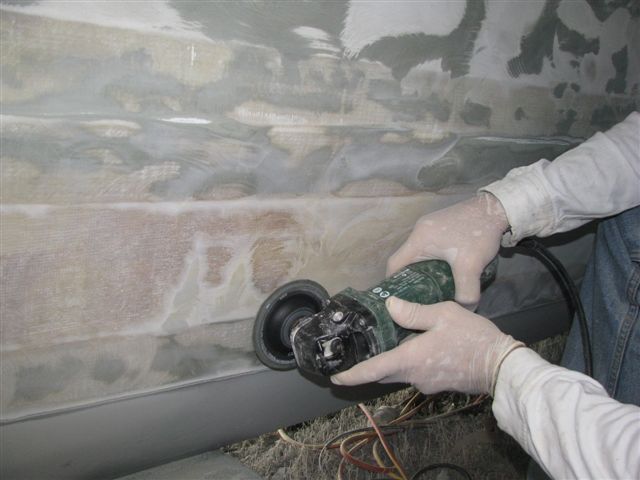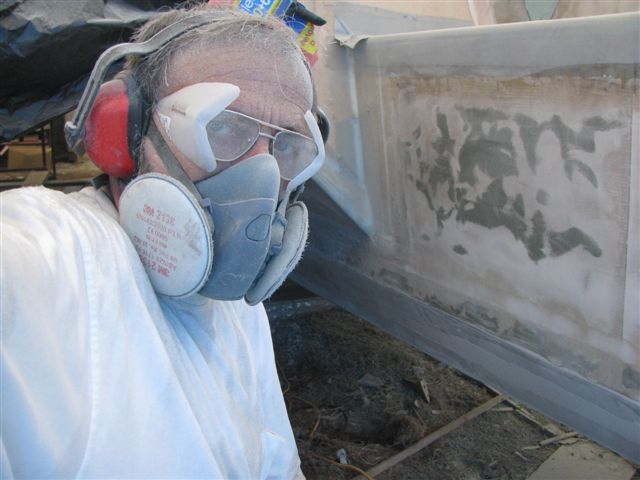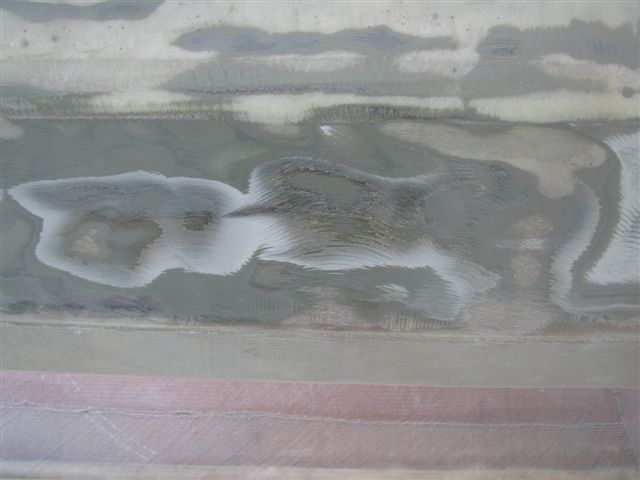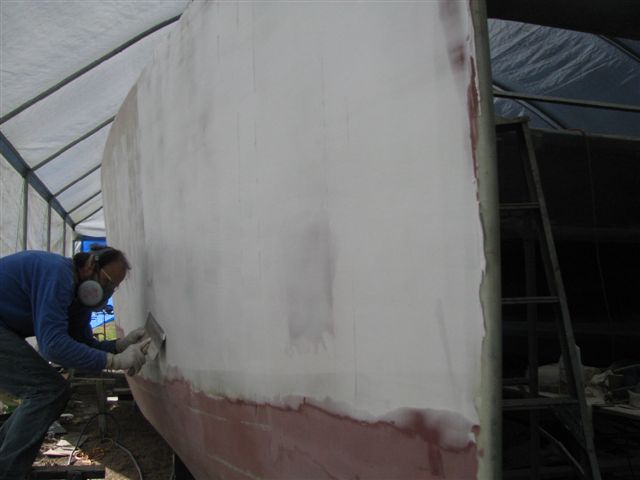
|
||||||||||||||||||||||||||||||||||||||||||||||||||||||||||
|
|
||||||||||||||||||||||||||||||||||||||||||||||||||||||||||
|
For those that think I have been a bit rough on ATL on this log, the opposite has been true. I have been kind. But to catch you up. The machine work on the Duflex balsa core panels that I received from ATL products and was very bad. The person responsible for selling them to me had to admit they were the worst he had ever seen. A representative from the company came to see what was going on and was effusive in her sympathy and said she would present the problem to the owner. The owner allowed a $500 credit toward products. Seeing as the panels and resins cost me over $32,000 I was not impressed. I bit my lip and ordered a 24ltr batch of resin with hardener that was most of that $500 credit. While that was going on I was also learning that the panels were not sealed as one would think panels laminated in 900 gram glass with epoxy would be. This was the cause of the outgassing issues detailed in part #6&7. What I didn't report in the log was that to save the first hull that had been faired at the wrong time of day and the bogg was covered in pores into the balsa core, I ground off all the fairing on the areas affected. I then covered the entire hull in resin. Three batches, mixed with a digital scale. Then while the resin was soft, I once again faired off the hull. All this was done at night so it would ingass. By the next morning I knew i was in trouble. The resin was still gell. I ran tests to confirm, bad hardener. This was the batch of resin I had got with the credit. I had used another type of resin for the fairing mix so it set ok but underneath it was the coating of the bad stuff. It was too soft to sand and too tough to scrape off. I put it out in the sun for over a month and it finally got hard. I sanded on the now very hard surface to key in subsequent coatings of resin and epoxy paint. I thought I had licked it........ |
||||||||||||||||||||||||||||||||||||||||||||||||||||||||||
|
||||||||||||||||||||||||||||||||||||||||||||||||||||||||||
|
|




